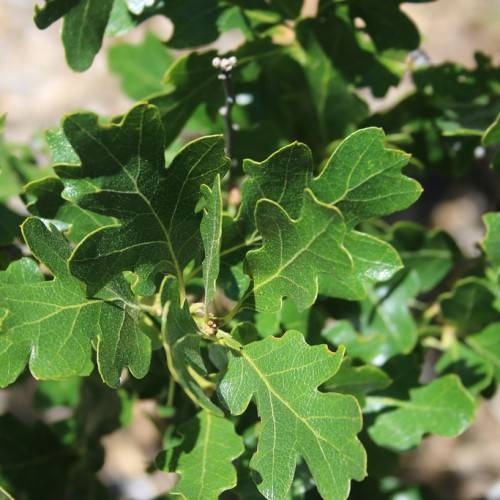
Garry oak
Quercus garryana
Cycle:
Perennial
Watering:
Frequent
Hardiness Zone:
4
Flowers:
Flowers In Spring
Sun:
Full sun
Soil:
Well-drained
Fruits:
Fruits In Summer Ready In Fall
Edible:
Yes
Leaf:
Yes
Growth Rate:
Moderate
Drought Tolerant:
Yes
Care Level:
Medium
watering
For the Asian pear plant (Pyrus pyrifolia), water when the soil becomes dry. Depending on the climate and season, you may need to water as little as once a week to as frequently as every 1 to 2 days during dry and hot periods. Check the soil 1-2 inches down and water when the top of the soil feels dry. When you do water, apply enough water to wet the entire root zone of the plant. Generally, aim for approximately 1 inch of water per week.
sunlight
Asian Pear plants require at least 6-7 hours of full sunlight per day and should be given a spot in the garden with the highest quality sunlight. For optimal growth, Asian Pears should be placed in a spot that is relatively warm, preferably with protection from strong winds. The ideal temperature for Asian Pear growth during spring and summer is between 65 and 85°F. In the winter months, a range of 45 to 65°F is ideal.
pruning
Asian pear (Pyrus pyrifolia) requires light to moderate pruning to maintain its desired shape and size. Pruning should be done in late winter to early spring when the tree is still dormant. Remove any branches that grow too close together, criss-crossing branches, and any dead or diseased branches. When removing crossed branches, consider leaving a stub of at least 3 inches long. To keep the tree shapely, remove branches growing off at an acute angle. Cut these branches back to the trunk or a nearby branch while leaving at least 2 nodes on the branch. The branches can be pruned all the way down to the trunk, if necessary. If there is too much vigor and overgrowth, thin out the crowded interior branches to promote better air circulation. Take care not to prune more than 25-30% of the foliage, as too much pruning can lead to severe branch die-back.
